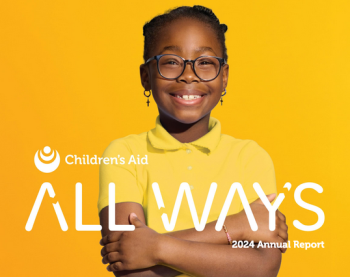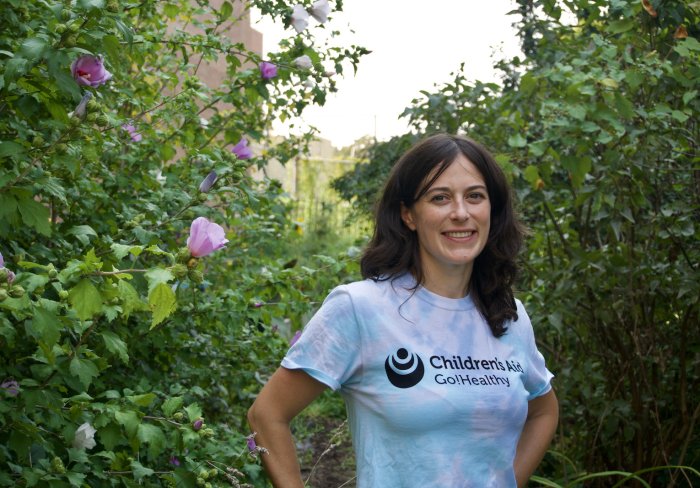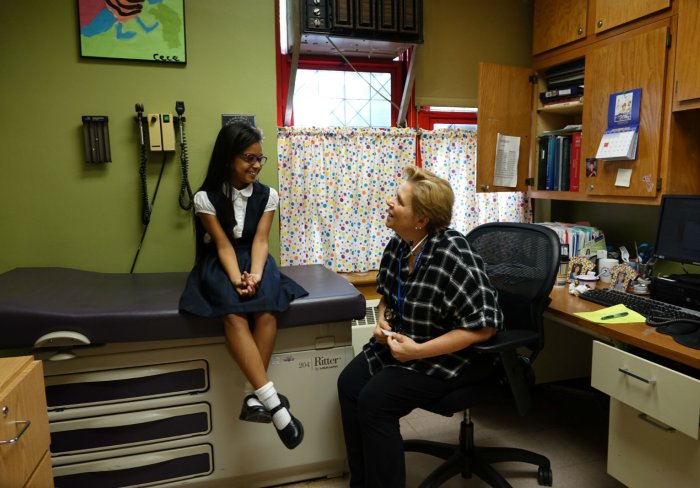Every September, schools across the nation—and the human service organizations that work with students—recognize Attendance Awareness Month. Mounting evidence confirms that consistent attendance is fundamental to academic learning—and anything less can be devastating to long-term achievement. At Children’s Aid, we have made #SchoolEveryDay a core component of our work.
Verónica Cuéllar, the data manager for South Bronx Rising Together, a collaborative community initiative co-founded by Children’s Aid, has been focused on chronic absence. She explains why battling chronic absence is a responsibility the entire organization must shoulder:
Before I started working for South Bronx Rising Together (SBRT), I knew nothing about chronic absence. I have since become a more informed advocate in the work many of our school staff are doing to help reduce chronic absenteeism. As children in our services start to head back to school, now is an important time to discuss how chronic absence acts as one of the biggest barriers to their learning.
Chronic absenteeism is defined as a student missing 10 percent or more days of school in a given school year, which at minimum translates into 18 days of lost classroom instruction. Nationally 6.5 million students—roughly 13 percent of school-aged children—are chronically absent, but children living in low-income neighborhoods are four times more likely than their better-off peers to be chronically absent.
In New York City, that means 1 in 4 students are chronically absent; and in Bronx Community District 3, the geographic focus of SBRT's work, almost 2 in 5 students are chronically absent. These patterns hold long-term repercussions. High rates of school absence, which includes both excused and unexcused absences, predict lower levels of proficiency in mathematics and English language arts standards, and lead to a higher likelihood that a student will not graduate high school, or pursue a college degree.
Student attendance is a multifaceted issue—one that engages all of the corners of our services. Through my work with SBRT, I’ve heard firsthand the narratives of why students are chronically absent in Community District 3. Asthma and other health issues, family appointments, sibling absences, involvement in the child welfare system, and transportation issues are often reasons why students are chronically absent. Some of these issues are simply beyond the reach of school staff. These factors are just as dangerously effective at working against children living in the Washington Heights, Harlem, and Staten Island communities we work in.
At Children’s Aid, we are coming together as an organization to build a collective strategy to help address chronic absenteeism. Every day, we engage with children and families with the hopes of improving their lives. Our goal is to understand what the reasons are for each family that is struggling to get their kids to school consistently. It works. Improved attendance in previously chronically absent students often results from positive engagement of students and parents in schools.
We cannot succeed if we do not give them all the tools they need to achieve, and in our society these tools are acquired through education. By ensuring that students are present in school every day, we increase their likelihood of achieving academic success, and we increase their likelihood of graduating high school, stepping up to higher education, and realizing their fullest potential.







